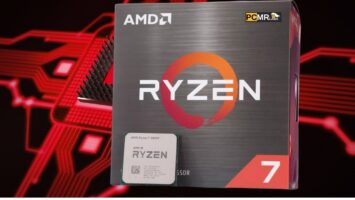Table of Contents
Introduction:
The Intel Core i7-10700K is a powerful processor that was released in 2020 as part of the Comet Lake-S series. It is built on a 10th generation architecture and has a base clock speed of 3.8 GHz, which can be boosted up to 5.1 GHz using Intel’s Turbo Boost 2.0 technology. The i7-10700K has 8 cores and 16 threads, making it ideal for heavy workloads such as video editing, 3D rendering, and gaming. In this blog post, we will take a closer look at the specification of the i7-10700K, its pros and cons, and how it compares to other processors in its class.
Specifications
| Specification | Value |
|---|---|
| Processor Model | Intel Core i7-10700K |
| Generation | 10th |
| Cores | 8 |
| Threads | 16 |
| Base Clock Speed | 3.8 GHz |
| Turbo Boost Speed | 5.1 GHz |
| Cache | 16 MB |
| TDP | 125 W |
| Lithography | 14nm |
| Socket Compatibility | LGA 1200 |
Pros:
- High clock speeds: The base clock speed of 3.8 GHz is already quite fast, and with Turbo Boost, it can reach speeds of up to 5.1 GHz, which is impressive. This makes the i7-10700K suitable for tasks that require a lot of processing power, such as video editing and 3D rendering.
- Multiple cores: The i7-10700K has 8 cores and 16 threads, which means it can handle multiple tasks at the same time. This makes it ideal for users who need to multitask frequently.
- Good performance: In general, the i7-10700K offers good performance across a variety of workloads. It can handle most tasks with ease, and it is also a good choice for gaming.
Cons:
- High TDP: The i7-10700K has a TDP of 125 W, which is relatively high compared to other processors in its class. This means that it may require a more powerful and potentially louder cooling solution to keep it running at optimal temperatures.
- No onboard graphics: The i7-10700K does not have any onboard graphics, so you will need to pair it with a dedicated graphics card if you want to use it for gaming or other graphics-intensive tasks.
- Expensive: The i7-10700K is a high-end processor, and as such, it comes with a high price tag. This may not be suitable for users on a budget.

Comparison to Other Processors:
One of the main competitors of the Intel Core i7-10700K is the AMD Ryzen 7 5800X. The 5800X is also a 8-core/16-thread processor, but it has a slightly lower base clock speed of 3.8 GHz and a higher boost speed of 4.7 GHz. The 5800X also has a lower TDP of 105 W and is built on a 7nm architecture, which is more efficient than the 14nm architecture of the i7-10700K. However, the i7-10700K still has a higher single-core speed, which gives it an edge in tasks that require a lot of processing power from a single core.
Here is a comparison of the Intel Core i7-10700K and the AMD Ryzen 7 5800X :
| Processor | Intel Core i7-10700K | AMD Ryzen 7 5800X |
|---|---|---|
| Generation | 10th | 11th |
| Cores | 8 | 8 |
| Threads | 16 | 16 |
| Base Clock Speed | 3.8 GHz | 3.8 GHz |
| Boost Clock Speed | 5.1 GHz | 4.7 GHz |
| Cache | 16 MB | 32 MB |
| TDP | 125 W | 105 W |
| Lithography | 14nm | 7nm |
| Socket Compatibility | LGA 1200 | AM4 |
Conclusion:
Overall, the Intel Core i7-10700K is a powerful and capable processor that is suitable for a wide range of workloads. Its high clock speeds and multiple cores make it ideal for tasks such as video editing, 3D rendering, and gaming. However, it does have a few drawbacks, such as its high TDP and the fact that it does not have onboard graphics. It is also on the pricier side compared to some other processors in its class. If you are in need of a high-performance processor and are willing to pay a premium for it, the i7-10700K is definitely worth considering. However, if you are on a tight budget, you may want to consider alternative options.
Also Checkout: The Top 6 CPUs for Gamers and Creatives: Which One Reigns Supreme?



Comments (No)